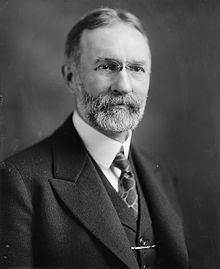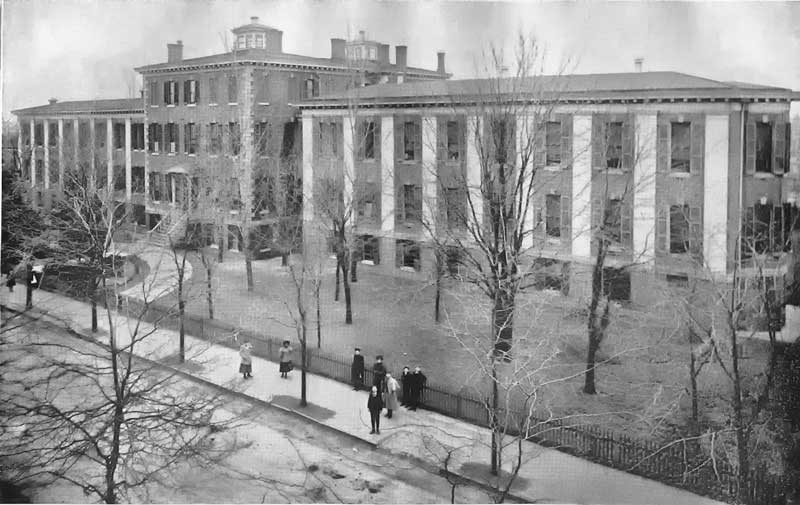
Justice George Sutherland photo from Wikipedia
In the part 1 and part 2 of this series I reviewed how, before the Great Depression and the New Deal, the courts largely still protected the rights of employees and employers to freely contract with regards to wages. The courts agreed that each individual was the best judge of the wages that they needed to perform a given job. They understood that there were so many factors in an individual’s life that it was impossible for any government agency to set a wage that was appropriate for everyone. On the employer side, the courts found that while employees had a right to pursue a living wage, it was exceeding the authority of the government to compel any given employer to provide those wages. They recognized that laws compelling some minimum wage took into account only half of the equation in regards to contracting for labor, the needs of the employee, needs that existed quite separate from their employment. These laws ignored the needs of the employer, for example for a standard of performance to merit the minimum wage. For these reasons and others, minimum wage laws were often struck down by the courts, as was the case in Adkins v Children’s Hospital.
The question to ask is this, if the courts had largely arrived at proper decisions with regards to minimum wage laws, how did it happen that within 15 years not only were the courts upholding state minimum wage laws but a lasting federal minimum wage was also enacted? The reasoning used in both the opinion and the dissents of the Adkins case give a clue as to what happened.
In the decision, Justice Sutherland upheld as a crucial element of the liberty guaranteed by the Constitution the right of contract, which is part of our freedom of association. We all have the right to decide who we will associate with and under what terms we will do so. This includes in contracting for our labor. We have the right, Sutherland held, to determine what wages we would accept to perform a certain job and our employer also had the right to determine what wage he is willing to pay and what level of performance would be required to receive that pay.
Justice Sutherland also noted, correctly, that there are limits to the right to contract, but sadly he misunderstood what those limits are. A proper limit on contract would include actions that violate the rights of either party or other individuals. For example, it doesn’t matter if employer and employee agree on the wages for killing someone as that act is a violation of the victim’s rights. This is not the sort of action that Justice Sutherland viewed as a proper limitation on the right to contract. What Justice Sutherland, and the courts in general, viewed as proper limitations were actions that somehow could be construed as affecting the “public interest.” The examples that Sutherland gave in his opinion included legislation affecting prices of grain elevators and warehouses, laws regarding the frequency and method of paying wages and setting a limit on the number of hours that could be worked safely in various jobs. Such later laws were, according to Sutherland, “sustained as a legitimate exercise of the police power on the ground that the legislature had determined that these particular employments, when too long pursued, were injurious to the health of the employees”.
The problem with this view of the limitations on the right to contract is that you cannot logically make the case for saying that the government can regulate the number of hours you work but not the pay you can receive for that work. Sutherland tried to defend the right to contract as to wages by pointing out that such a freedom would help both workers and employers balance the control the government rightfully, in his view, imposed over hours worked. Once you agree in principle that the government can interfere with some non-rights violating aspects of a contract, you have granted them the power to do the same in all aspects. As Chief Justice Taft pointed out in his dissent:
In absolute freedom of contract, the one term is as important as the other, for both enter equally into the consideration given and received, a restriction as to one is not any greater, in essence, than the other, and is of the same kind. One is the multiplier, and the other the multiplicand.
Justice Holmes picked up this theme in his dissent as well:
I confess that I do not understand the principle on which the power to fix a minimum for the wages of women can be denied by those who admit the power to fix a maximum for their hours of work. I fully assent to the proposition that here, as elsewhere, the distinctions of the law are distinctions of degree, but I perceive no difference in the kind or degree of interference with liberty, the only matter with which we have any concern, between the one case and the other.
In this sentiment I am in complete agreement with the dissenting justices. You cannot reasonably claim that you have the authority to regulate the number of hours worked but then deny you have the authority to regulate the amount of pay for each of those hours. In both cases the government is interfering in the rights of both employee and employer to freely contract with each other, absent any violation of rights, and to hold otherwise is a blatant contradiction. Control of non-rights violating actions does not mix with freedom.
Sadly, following this decision, the courts would eventually move in the direction of one solution to this contradiction: more control. Despite striking down minimum wage laws in this case, within 15 years the logic of the dissent had won the day and it became accepted that the government could not only determine how many hours could be worked but also the rate of pay, not just at the state level but nationally as well. The view that the government should be, and indeed must be, paternal in nature, protecting us from our own choices, is so ingrained now that few question it, to the point that the debate about the minimum wage today is not whether we should have one or not, but rather how high they should set it.
Long gone are the days when the courts recognized that the vast majority of individuals are capable of making decisions about contracting their labor based on their own judgement of their particular circumstances. Long gone are the days when politicians understood that companies, even those that were unable or unwilling to pay a “living wage,” do not cause poverty but alleviate it to the extent of the wages they pay. Today, we live in a world where our individual judgment is largely replaced by, in the words of Justice Sutherland, “a general formula prescribed by a statutory bureau.”
It is hard, but worth the effort, to imagine a world where we had chosen the other resolution to the contradiction: more freedom. If Justice Sutherland had pointed out that just as the government has no right to dictate wages, they also have no right to dictate the number of hours you can work or any other aspect of work. Even conditions which might potentially be harmful should not be prohibited, but left to the private choices of the parties involved. A person might reasonably decide that working in conditions that others find hazardous are worth the risk and the only role of the government would be to intervene in cases of fraud. (e.g. an employer claims to provide effective protective gear, but it actually doesn’t protect) As long as neither side is using force, i.e. a literal or metaphorical gun to the head, against the other, they should be left free to contract as they see fit.
It is hard, but worth the effort, to imagine a world, a country, where the government acted solely to protect your individual rights but otherwise left you free to live your life.


Comment from Twitter:
Lochner-era jurisprudence was inconsistent in protecting economic liberty and thus vulnerable to Holmes’ attacks https://t.co/lF3nvGytDN